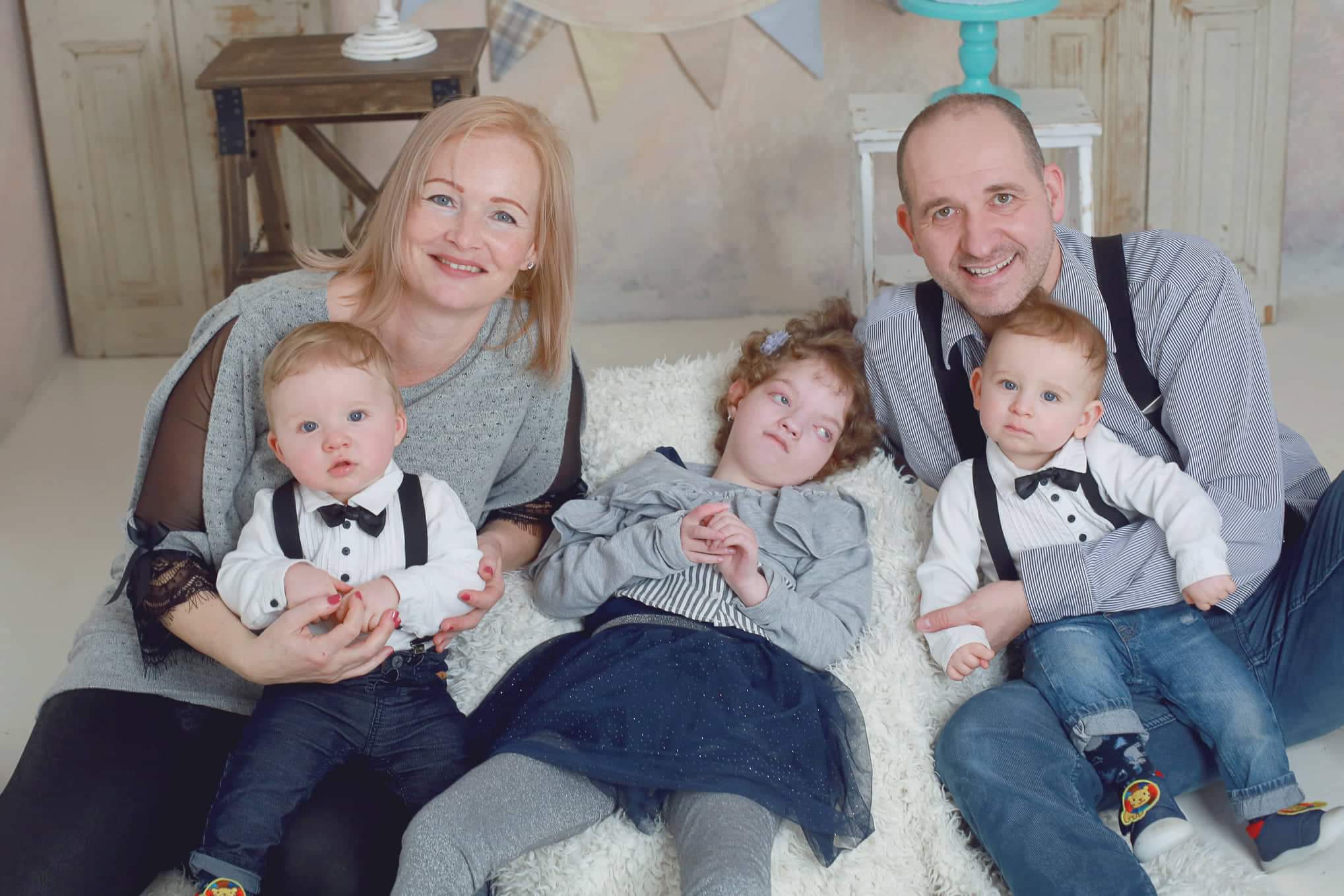
Panka’s Story

I became a first-time mom at 37 years old. My husband and I were the happiest people on Earth.
My pregnancy was symptom- and problem-free until the 28th week. We were excitedly preparing for the 4D ultrasound to find out whether a boy or girl was growing in my belly when we received news I don’t think anyone can really prepare for.
Our little patient Panka’s mom, Klaudia, shares their story.
“The examining doctor informed us that the baby was lagging behind in both weight and size compared to ‘normal’ measurements. The following six weeks were very painful — constant monitoring and tests. Each day a different doctor examined us, and their opinions about the baby varied. The ultrasound and NST continued to show no abnormalities apart from the low weight.
At week 35, Panka was finally born, and immediately we could see from her little face that something was wrong. Tests revealed that she has Wolf-Hirschhorn syndrome, a very rare syndrome; about 15-18 children in Hungary live with this ‘condition.’
I don’t know when we truly processed this news — we just instinctively did what we had to do. We attended Dévény therapy twice a week, TSMT therapy, one-week rehabilitation sessions, and weekly corrective casting for her clubfoot until she was six months old.
Time passed, but unfortunately the problems accumulated. Panka was very difficult to feed and was frequently hospitalized in intensive care due to epileptic seizures. At age three, following doctors’ advice, our little girl underwent a gastrostomy surgery for more substantial feeding and development. This is still how we manage her feeding. This good decision made our daily lives easier for all three of us — we could live a better quality life, organize outings more freely, and didn’t have to endure the 45-minute feeding sessions every two hours. Meanwhile, we connected with several parents in similar situations.
The little ones, the ‘Wolf kids,’ look very much alike. Everyone has their own struggles and illnesses. Panka’s condition was perhaps the most severe — she still cannot walk and can only sit with assistance, despite years of therapy. Unfortunately, epileptic seizures wiped out all the progress we painstakingly made in her movement. Her clubfoot required surgery, and we regularly visit the cardiologist due to a detected heart abnormality.
We had to accept that at the age of five, no therapy would improve our daughter’s condition. Our goal must be to maintain her current state as long as possible and to keep her limbs pain-free. This acceptance helped us avoid slowly losing our minds in everyday life, and stop our lives from revolving around therapy sessions — wondering what we missed or where else we should have gone for improvement.
We began to live together more fully. We traveled a lot with her; she still loves car rides. We massage and exercise her daily. Meanwhile, when Panka was six, God blessed us with healthy, lively, mischievous twin boys.
A fellow mother told me about the Tábitha House in Törökbálint. She spoke of their services and relief for affected parents. They regularly bring their disabled boys there while they take a break or even go on active vacations with their healthy children. Organizing programs or holidays with a severely physically and mentally disabled child is no easy task. It’s a real challenge for parents but a necessary chance to rest.
The respite care provided by Tábitha has been a tremendous help in our lives. The staff, doctors, and nurses provide full, free care for children with incurable, severe illnesses and their families. Within this service, a child requiring care can stay there for 28 days a year, while their parents and family rest. During this time, the Tábitha team takes care of the children.
Contacting the Tábitha House was one of the best decisions of our lives.”
Thank you so much, Klaudia!



 Belépés / regisztráció
Belépés / regisztráció